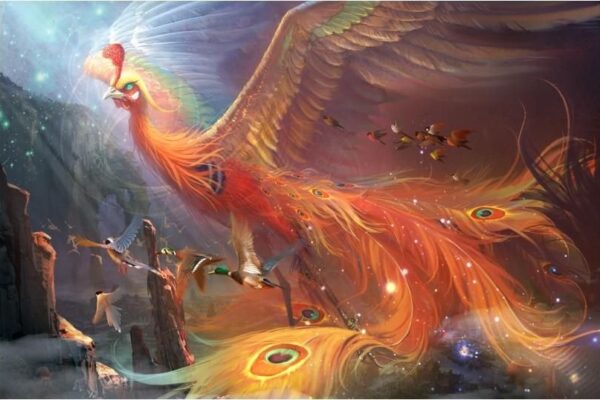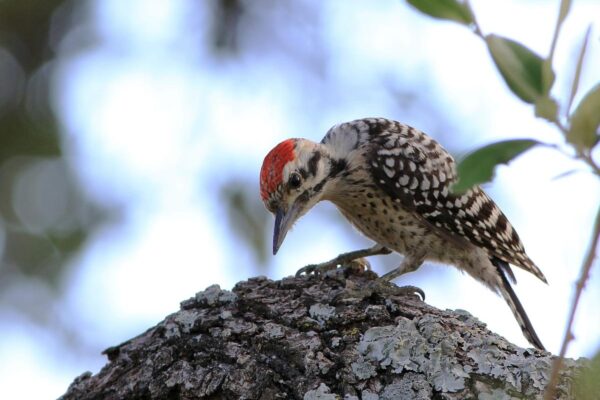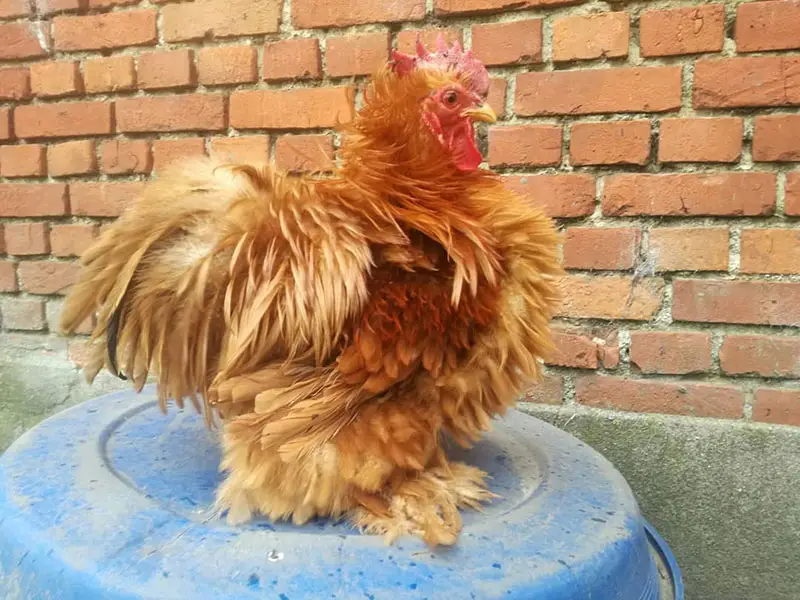In the realm of raptors, there exists a group of majestic hunters that effortlessly command the sky with their piercing gaze and striking appearance – hawks with white heads. These magnificent birds of prey, with their regal white-feathered heads, evoke a sense of awe and admiration. Imagine the scene: a hawk soaring through the air, its white head gleaming in the sunlight, as it scans the landscape with razor-sharp focus. Join us on a captivating journey as we explore the world of hawks with white heads, uncovering the secrets of their formidable hunting skills, their habitat preferences, and the significance of their unique plumage. Get ready to be enthralled by the grace and power of these avian predators as we delve into their extraordinary lives.
List of Hawks with White Heads
- Osprey
- White Hawk
- White-necked Hawk
- Mantled Hawk
- Hawaiian Hawk
- Ferruginous Hawk
- Gray Goshawk
- Rough-legged Hawk
- Black-faced Hawk
- Long-legged Buzzard
- Black-faced hawk
- Black and white hawk-eagle
Osprey

- Scientific name: Pandion haliaetus
- Lifespan: 10 years
- Size: 20-inch
- Native to: throughout the planet, except in Antarctica, Africa, and South America,
The Osprey (Pandion haliaetus) is a large bird of prey with a distinctive hooked beak. It has a wingspan of up to 6 feet (1.8 meters) and a dark brown body with white underparts. Ospreys are found worldwide, inhabiting a variety of coastal and freshwater environments. They are known for their exceptional fishing skills, as they dive from the air to catch fish with their sharp talons. Ospreys build large stick nests in trees, on cliffs, or even on man-made structures such as utility poles or platforms. Females lay a clutch of 2 to 4 eggs, and both parents take turns incubating them. Ospreys have a distinctive call, often described as a series of sharp whistles or chirps.
White Hawk

Image: Source
- Scientific name: Pseudastur albicollis
- Lifespan: Up to 12 years
- Size: 48-56 centimeters (19-22 inches)
- Weight: 580-850 grams (1.3-1.9 pounds)
- Origin: Central and South America
The White Hawk (Pseudastur albicollis) is a majestic bird of prey characterized by its predominantly white plumage. It has a sturdy build, a hooked beak, and piercing yellow eyes. The White Hawk is native to the neotropical regions of the Americas, including Central and South America. It inhabits a variety of habitats such as forests, woodlands, and open savannas. This species primarily feeds on small mammals, reptiles, birds, and large insects. The White Hawk constructs its nest high in the trees, often using sticks and leaves. Females lay a clutch of 2 to 3 eggs, which are incubated by both parents. With its impressive appearance and soaring flight, the White Hawk is a captivating sight in its natural habitat.
White-necked Hawk

- Scientific name: Buteogallus lacernulatus
- Lifespan: Up to 20 years
- Size: 51-56 centimeters (20-22 inches)
- Weight: 740-900 grams (1.6-2 pounds)
- Origin: Central and South America
The White-necked Hawk (Leucopternis lacernulatus) is a striking raptor with a white neck and underparts, contrasted by a dark gray to blackish body and wings. It has a hooked beak and piercing eyes. This hawk species is found in parts of Central and South America, inhabiting a range of habitats including forests, woodlands, and open areas. The White-necked Hawk primarily preys on small mammals, birds, reptiles, and large insects. It builds nests in trees and lays a clutch of 1 to 2 eggs, which are incubated by both parents. The call of the White-necked Hawk is a series of high-pitched, clear whistling notes. With its distinctive appearance and soaring flight, the White-necked Hawk is a captivating sight in the neotropical regions it calls home.
Mantled Hawk

Image: Source
- Scientific name: Pseudastur polionotus
- Lifespan: Up to 20 years
- Size: 41-46 centimeters (16-18 inches)
- Weight: 380-550 grams (0.8-1.2 pounds)
- Origin: Central and South America
The Mantled Hawk (Pseudastur polionotus) is a striking raptor native to the neotropical regions of Central and South America. It features a distinct plumage pattern with a dark grayish mantle, contrasting with a white underbody and black wings. This medium-sized hawk possesses a hooked beak and powerful talons. It inhabits a variety of habitats, including forests and woodlands. The Mantled Hawk is a skilled hunter, preying on a diverse diet that includes small mammals, birds, reptiles, and large insects. It constructs its nest high in the trees, often using sticks and leaves. Females lay a clutch of 2 to 3 eggs, which are incubated by both parents. With its striking appearance and impressive aerial abilities, the Mantled Hawk is a captivating sight for bird enthusiasts in its natural habitat.
Black-faced hawks with White Heads

- Scientific name: Leucopternis melanops.
- Lifespan: about 15 years
- Size: 21-inch
- Native to: lowland Peru north of the Amazon and northeastern Ecuador to Venezuela, southern Colombia, Brazil north of the Amazon, and the Guyanas.
The Black-faced Hawk (Leucopternis melanops) is a raptor species found in parts of Central and South America. This hawk is known for its striking appearance, characterized by a predominantly black plumage on its face, contrasting with a white or pale gray body. It has a sturdy build, a hooked beak, and piercing yellow eyes. The Black-faced Hawk inhabits various habitats, including forests, woodlands, and savannas. It primarily feeds on small mammals, birds, reptiles, and large insects. This species constructs its nest in trees, often using sticks and leaves. Females lay a clutch of 1 to 2 eggs, which are incubated by both parents. With its unique facial markings and powerful presence, the Black-faced Hawk is an intriguing and captivating bird of prey in its natural range.
Rough-legged Hawk

Image: Source
- Scientific name: Buteo lagopus
- Lifespan: 16-20 years
- Origin: Native to North America
- Size: Length 18-24 inches, wingspan 52-58 inches
The Rough-legged Hawk (Buteo lagopus) is a medium-sized raptor with a hooked beak. It has a distinctive feathered facial disk and long feathered legs, which give it its name. Rough-legged Hawks are found in the northern parts of North America, Europe, and Asia. They have a characteristic plumage with a mix of dark and light feathers, and their legs are feathered all the way down to their feet. These hawks primarily feed on small mammals, such as rodents, and can often be seen hovering or perched on elevated areas while searching for prey. Rough-legged Hawks build nests on cliffs or in trees, and females lay a clutch of 2 to 6 eggs. Their call is a high-pitched, piercing scream.
Black and white hawk-eagle

- Scientific name: Spizaetus melanoleucus
- Lifespan: Up to 42 years
- Size: 20–24 in
- Native to: southern Mexico to eastern Peru, through Brazil and northern Argentina.
The black and white hawk eagle is distinguished by its yellow eyes, black and white body color, yellow feet, and yellow beak with a black tip.
The black and white hawk-eagle has a wingspan of approximately 46 inches, is about 24 inches tall, and weighs around 30 oz. They are outstanding hunters, like other huge black birds with white heads. Smaller birds, notably wood quails, and toucans, are the preferred prey of this hawk eagle.
These huge white and black raptors make nests throughout the mating season, and their nests contain two creamy white eggs.
They are found in Brazil, Argentina, and Southern Mexico and prefer woodlands in mid-elevation areas.
Ferruginous Hawk:

Image: Source
- Scientific name: Buteo regalis
- Lifespan: 8-10 years
- Origin: Native to North America
- Size: Length 22-27 inches, wingspan 53-56 inches
The Ferruginous Hawk (Buteo regalis) is a large bird of prey found in North America. It is known for its striking appearance with a rust-colored or “ferruginous” plumage on its back, contrasting with a white underbody. This majestic hawk has a robust build, a hooked beak, and yellow eyes. It prefers open grasslands, deserts, and prairies as its habitat. The Ferruginous Hawk primarily feeds on small mammals, such as rabbits and ground squirrels, but also preys on birds and reptiles. It constructs its nest on cliffs or in trees, using sticks and grasses. Females lay a clutch of 2 to 5 eggs. The Ferruginous Hawk is admired for its graceful flight and powerful hunting skills, making it a captivating sight in the North American skies.
Gray Goshawk (Hawks with White Heads)

Image: Source
- Scientific name: Accipiter novaehollandiae
- Lifespan: Up to 16 years
- Size: 30-45 centimeters (12-18 inches)
- Weight: 330-720 grams (0.7-1.6 pounds)
- Origin: Australia and nearby islands
The Gray Goshawk (Accipiter novaehollandiae) is a medium-sized bird of prey found in Australia, Papua New Guinea, and the Solomon Islands. As its name suggests, it has predominantly gray plumage, which helps it blend into its forested habitats. The Gray Goshawk has a sharp, hooked beak and piercing yellow eyes. It is known for its agile flight and adept hunting skills. This hawk primarily preys on birds, small mammals, and reptiles, often ambushing them from dense foliage. It constructs nests in trees, usually made of sticks and lined with soft materials. The female lays a clutch of 2 to 4 eggs. The Gray Goshawk’s presence in the forest is a testament to the diverse birdlife found in the region and its important role as a predator in maintaining the ecosystem’s balance.
Long-legged Buzzard

- Scientific name: Buteo rufinus
- Lifespan: Up to 20 years
- Size: 50-60 centimeters (20-24 inches)
- Weight: 1.2-2.5 kilograms (2.6-5.5 pounds)
- Origin: Europe, Asia, and North Africa
The Long-legged Buzzard (Buteo rufinus) is a large bird of prey found in Europe, Asia, and parts of North Africa. It is known for its impressive wingspan and long legs, which aid in its hunting strategies. The plumage of the Long-legged Buzzard varies, but it often has a mix of dark and light brown feathers. It has a hooked beak and piercing eyes. This buzzard species inhabits a range of habitats, including open grasslands, woodlands, and mountainous regions. It primarily feeds on small mammals, birds, reptiles, and large insects. The Long-legged Buzzard constructs its nest on cliffs or in trees and lays a clutch of 2 to 4 eggs. With its soaring flight and keen hunting abilities, the Long-legged Buzzard is a remarkable sight in its natural habitat.
Final Thoughts on Hawks with White Heads
Our exploration of hawks with white heads has revealed the awe-inspiring world of these majestic birds of prey. With their striking white-feathered heads, they capture our attention and leave us in awe of their formidable presence. These skilled hunters dominate the skies with their sharp vision and agile flight, demonstrating their exceptional hunting abilities. The white heads of these hawks not only add to their visual allure but also serve as a distinctive feature that sets them apart in the avian kingdom. As we conclude our journey, let us carry with us a newfound appreciation for the grace, power, and beauty of hawks with white heads. May their majestic presence forever inspire us to admire and protect the magnificent creatures that share our natural world.
FAQs on Hawks with White Heads
Are hawks with white heads found worldwide?
No, hawks with white heads are predominantly found in specific regions and habitats. Their distribution depends on the species and their ecological requirements. They can be found in North America, parts of Europe, and other select locations around the world..
Do hawks with white heads migrate?
Migration patterns vary among hawk species. While some hawks with white heads, like the Osprey, undertake long-distance migrations, others may be more resident or only migrate short distances in response to changing food availability or environmental conditions.
Are hawks with white heads noisy birds?
Hawks, including those with white heads, are generally not known for their vocalizations. They use calls for communication purposes, such as attracting mates or signaling territorial boundaries. Their calls can range from high-pitched screeches to softer, melodious vocalizations.
Can hawks with white heads be trained for falconry?
Yes, some species of hawks with white heads, such as the Harris’s Hawk, have been historically used in falconry due to their trainable nature. However, falconry regulations and practices vary among countries, and it requires proper licensing and expertise to engage in this activity responsibly.






